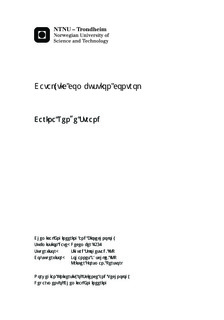Catalytic combustion control
Master thesis
Permanent lenke
http://hdl.handle.net/11250/247848Utgivelsesdato
2012Metadata
Vis full innførselSamlinger
- Institutt for kjemi [1394]
Sammendrag
A mathematical model representing the dynamic behaviour observed at the actual catalytic incineration plant at Perstorp was derived. The model equations for the two main process units, the heat exchanger and the incinerator, were based on the lumped systems approach in order to avoid using partial differential equations. The model was written in Matlab and implemented in Simulink using s-functions for the dynamic study. By analyzing the dynamic data from the actual plant, it was discovered that the possible source of the ocassional large temperature variations in the incinerator is the periodic variations in the inlet compositions, amplified the overly agressive air valve controller combined with a significant dead time. This results in oscillations due to overshooting. This behaviour was successfully reproduced using the derived model. Two possibilities for improving the control performance were investigated, both using already existing sensors and actuators. The first control improvement involved reducing the proportional gain according to the SIMC tuning rules for PI controllers. This resulted in a significant reduction in the amplitude of the oscillations in the temperatures throughout the reactor, and thus a more stable performance. Finally, cascade control was implemented using the faster-responding catalyst bed temperature for the inner loop, and the reactor outlet temperature for the outer loop. This provided the most optimal results with the best disturbance rejection as it is able to compensate for the disturbance before it is detected in the outlet temperature.
